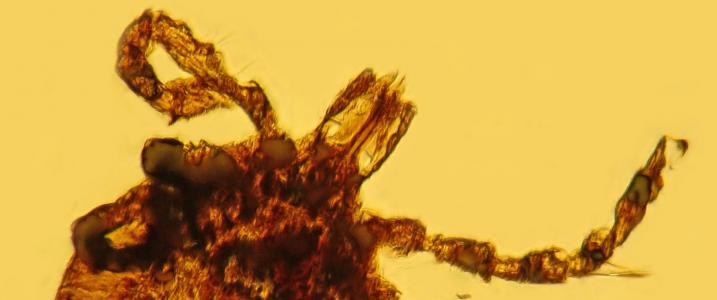Lyme disease is a stealthy, often misdiagnosed disease that was only recognized about 40 years ago, but new discoveries of
ticks fossilized in amber show that the bacteria which cause it may have been lurking around for 15 million years - long before any humans walked on Earth.
The findings were made by researchers from Oregon State University, who studied 15-20 million-year-old amber from the Dominican Republic that offer the oldest fossil evidence ever found of
Borrelia, a type of spirochete-like bacteria that to this day causes Lyme disease. They were published in the journal
Historical Biology.
In a related study, published in
Cretaceous Research, OSU scientists announced
the first fossil record of Rickettsial-like cells, a bacteria that can cause various types of spotted fever. Those fossils from Myanmar were found in
ticks about 100 million years old.

Tick preserved in amber
As summer arrives and millions of people head for the outdoors, it's worth considering that these tick-borne diseases may be far more common than has been historically appreciated, and they've been around for a long, long time.
"Ticks and the bacteria they carry are very opportunistic," said George Poinar, Jr., a professor emeritus in the Department of Integrative Biology of the OSU College of Science, and one of the world's leading experts on plant and animal life forms found preserved in amber. "They are very efficient at maintaining populations of microbes in their tissues, and can infect mammals, birds, reptiles and other animals.
"In the United States, Europe and Asia, ticks are a more important insect vector of disease than mosquitos," Poinar said. "They can carry bacteria that cause a wide range of diseases, affect many different animal species, and often are not even understood or recognized by doctors.


Comment: Could natural cures including a ketogenic diet help prevent or ameliorate the ravages of TB? See also: